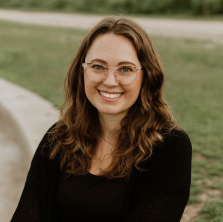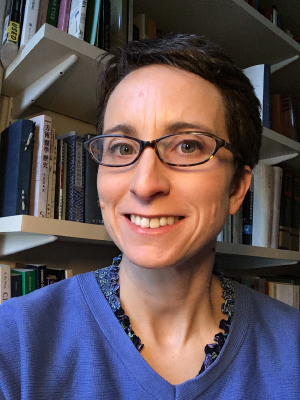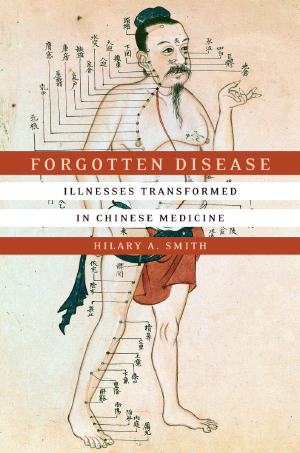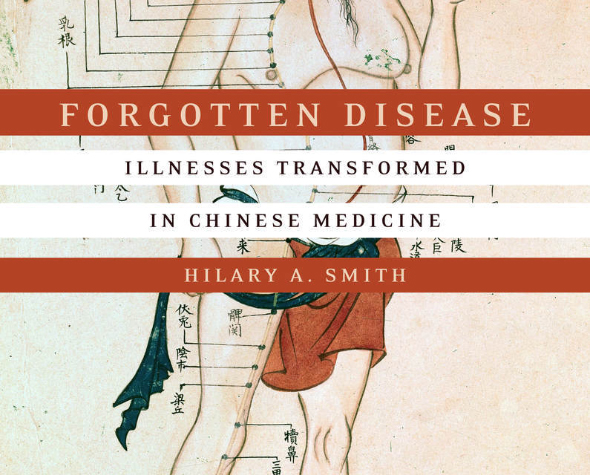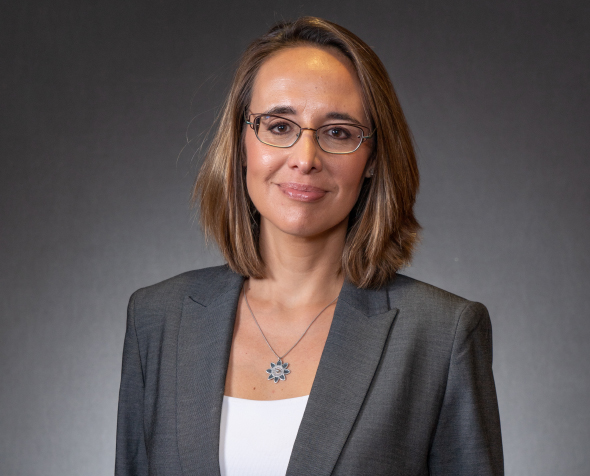Q&A: Engaging Diverse Voices in DU’s Asian Studies Program

Dancers from DU's North Indian Classical Dance performance in 2019.
The Asian Studies Program at the University of Denver includes faculty members who represent the diverse range of Asian cultures. Students majoring or minoring in the program will engage with Asian cultural developments ranging from South Asian music and dance to Chinese economics and medicine. We talked with Hilary A. Smith, associate professor of history and chair of the Asian Studies Program, to get an inside look at the program’s areas of focus and learn more about how students can apply Asian studies in a modern context.
Congratulations on your new role as chair of the Asian Studies Program! What excites you most about this program?
I love the depth and variety of faculty expertise that the program offers. For a college of DU’s size — small, compared to other universities with Asian studies departments and programs — we offer a surprising range of courses on Asia. You can learn about Hindu funeral customs, Japanese pop culture, Tibetan religion, Chinese film or medicine, politics in East Asia, and lots more. You can even join an ensemble that plays classical Indian music (no experience necessary)! But because DU is such a small and student-focused institution, you get to learn these things in a small-class setting with lots of individual support from professors.
Your book “Forgotten Disease: Illnesses Transformed in Chinese Medicine” sheds light on the history of disease in early China. Can you provide an example of the way the understanding of disease has changed over time in Chinese society?
My book covers a long span of time, starting in the fourth century A.D. and continuing into the 20th century, and there were a lot of changes over that long span in how Chinese doctors and patients understood disease. But one of the biggest changes happened in the late 19th and early 20th centuries, when Chinese modernizers started to adopt new scientific ideas about what causes disease — ideas about germs and vitamin deficiencies, for example. Before, doctors often attributed diseases to things like wind or damp qi (a kind of vital force or substance) invading the body, or to the vital energies in the body not circulating properly. Early 20th-century scientists tended to be pretty dismissive of older explanations like those.
From my perspective, something was gained when Chinese doctors adopted new scientific ideas, but something was also lost. Understanding germs and vitamins is crucial, of course, for the kinds of diseases that can be easily cured with antibiotics or supplements, but many diseases are more complicated than that. Even though the older explanations might sound kind of silly or fanciful to our ears, they involved closely observing things like climate, terrain, seasons and the whole person. You can’t very well diagnose invasive qi without paying attention to the environment producing the qi, and it’s hard to talk confidently about stagnant vital energies if you haven’t spent time listening carefully to what a patient has to say about what she’s feeling and experiencing. So I think it’s regrettable that a lot of accumulated knowledge in the Chinese classics was marginalized when scientific medicine started to develop in China. That’s been changing in recent years, though, as practitioners of scientific medicine have begun to realize the value of classical Chinese medicine.
Can you talk about the importance of Asian Studies in the context of rising hate crimes against AAPI (Asian American Pacific Islander) communities?
Anti-Asian hate is often fueled by ignorance, and Asian Studies is a very good way to combat that. You’re unlikely to stand by while other people lump all AAPI folks together and demonize them if you’ve engaged meaningfully with the diverse voices under the umbrella term “Asian.” And engaging with diverse voices is exactly what our students do. They read stories by Japanese authors, watch films by Chinese and Indian filmmakers, and analyze work by Tibetan artists. They learn from professors of South Asian and East Asian heritage. Many of our students study abroad, and for many of those who do, their time in Asia is their first experience being part of a racial or ethnic minority. That can be really eye opening.
For our AAPI students, Asian Studies classes are often the first time they’ve seen themselves or their families represented in their studies. In their classes, they talk about culture, religion, history, politics and economics with other AAPI students and faculty, as well as non-AAPI students and faculty who value Asian cultures. That can create a greater sense of belonging and community at DU. It also helps empower these students to marshal allies and speak out when they encounter discrimination.
All of it together helps create more empathy for the challenges of being AAPI in America, and more appreciation for the contributions that AAPI figures have made to humanity’s shared knowledge and achievements. From the learning experiences that they have at DU, regardless of their own ethnic background, Asian Studies graduates are well equipped to spread understanding and stand up in solidarity with anyone targeted for being perceived as Asian. That’s especially important right now.
What are a few classes students in the Asian Studies Program can expect to encounter?
All of our majors take intermediate and advanced levels of either Chinese or Japanese language. Not only is proficiency in Japanese or Chinese an impressive and distinctive skill to have when you’re looking for a job, but studying these languages is great fun. Learning to communicate in a language so different from English humbles and empowers you at the same time. And our language professors are terrific!
Another key class that many of our students take is JAPN 1216, Popular Culture in Japan, with Assistant Professor Orna Shaughnessy. Many of our students have a special interest in anime or manga, and this class analyzes those genres and much more, stretching back several hundred years and including everything from woodblock printing and kabuki theater to television fandom and cyborgs. CHIN 1516, Contemporary China in Literature and Films, taught by Teaching Associate Professor Ping Qiu, is another popular introductory class. It immerses students in novels and films highlighting some major changes and controversial issues in China in recent years.
The major is very flexible, though, and as I mentioned, our course offerings are varied. So while all majors take intermediate and advanced classes in one language, when it comes to literature, religious studies, history, art history, music, politics or economics, majors are free to select whatever combination of Asia-focused classes best suits their own interests.
How have alumni applied what they’ve learned in the Asian Studies Program?
Our alumni do all kinds of things, from the foreign service to game development. Some go on to work in study-abroad administration, helping create and maintain programs that give college students meaningful experiences abroad, or in international education, working with international students and scholars coming to the U.S. Some choose to work abroad themselves, often in business or education. Others go to graduate school and hone their skills in translation, or develop more specialized knowledge about a particular aspect of Asian economies, political systems or societies. That can be a path to fulfilling work as researchers for think tanks and consultancies.
Even for those who don’t end up working in a field directly related to Asia, though, the skills and attitudes they’ve developed — language proficiency as well as cultural humility and sensitivity — give them an advantage in jobs that require communicating with people from different backgrounds with dissimilar ideas. And that describes just about any job I can think of!
